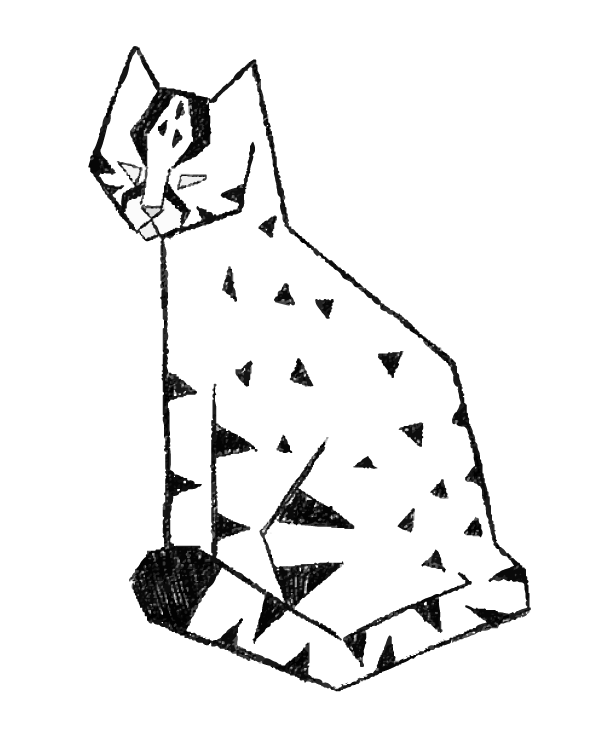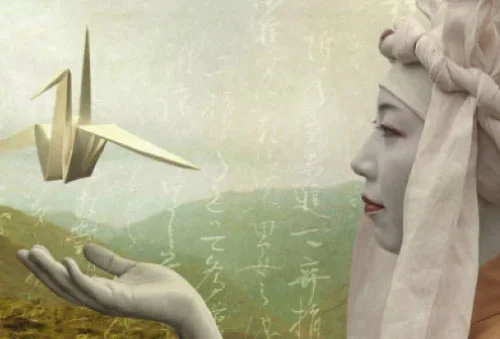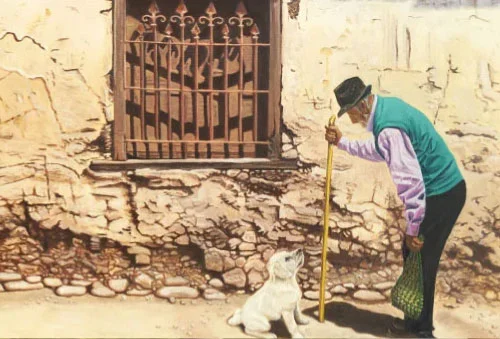7 letters for 7 birds / 7 cartas para 7 pájaros
Fecha
01 Julio 2021
Lydia Rubio is a Cuban born, American multidisciplinary visual artist with a 40-year studio practice. Her work in painting, sculptures, public art, unique artist books is diverse in themes the relate to nature, ecology, exile, migration, other art and based on a system of conceptual parameters using words, image and numbers.
Ms Rubio has had multiple exhibitions in national museums like The Center for Book Arts NY, The Bronx Museum of the Arts, Chicago Museum of Contemporary Art, Museum of Latin American Art CA, Lowe Art Museum, Frost Art Museum, NSU Art Museum, Florida.
Her artist books and journals are in university and museum collections like the Rare book collections of Stanford University, Bryn Mawr College, University of Southern California, The Wolfsonian FIU, Cuban Heritage Collection, Sackner Archive of Concrete Poetry, University of Washington.
She has been awarded The Tree of Life 2020, Ellie’s Creator Award 2019, Pollock Krasner, Cintas Fellowship, State of Florida, Graham Foundation and taught at the Harvard Graduate School of Design, Parsons School of Design, University of Puerto Rico. An artist traveler that has lived in Cuba, Florence, Boston, New York, Miami, Bogota and Puerto Rico, now based in Hudson NY.
Marjorie Agosin is a poet, human rights activist and professor of Latin American Literature at Wellesley College. She has authored more than 50 books of poetry. memoirs and two young adult novels. The Chilean government recognized her with the Gabriela Mistral Medal of honor for life time achievement and has received many other awards such as the
Pura Belpre award for best novel I lived in Butterfly Hill and the Latino Literature Prize in several occasions.
She has been invited to lecture in Europe, the Middle East and Latin America and her work has been featured in The New York Times, The Christian Science Monitor, The Washington Independent, El Mercurio, Time for Kids, and others. She lives with her family in Wellesley Ma, the coast of Maine and Costa Brava, Chile. She is currently collaborating in a joined project Notas del Mar with Jill Levine and Lydia Rubio.
Suzanne Jill Levine, Professor at UCSB’s Spanish & Portuguese Department and Comparative Literature since 1988, is now Emerita.
Literary critic, poet, educator and translator Suzanne Jill Levine earned a BA at Vassar
College, an MA at Columbia University, and a PhD in the field of Latin American literature at New York University. She is the author of several books, notably the literary biography Manuel Puig and the Spider Woman (2000) and The Subversive Scribe: Translating Latin American Fiction (1991).
As a translator of over 40 books (and hundreds of prose and poetry entries in journals and anthologies) by many Latin American writers of the twentieth century, Levine has been awarded distinguished residencies and grants including fellowships from the National Endowment for the Arts, the National Endowment for the Humanities, the Guggenheim Foundation, prizes from PEN USA West and a PEN American Award for Career Achievement in Hispanic Studies.
7 LETTERS TO 7 BIRDS
Artist: Lydia Rubio / info@lydiarubio.com / www.lydiarubio.com
Letters: 11 x 9.5 inches, watercolor, ink and collage on 1950 handmade Fabriano paper.
Envelopes: Handmade brown parchment paper St Armand Montreal CA.
A video of the project can be seen here: https://lydiarubio.com/letters-to-hudson-7-letters-to-7-birds/ Credit: David McIntyre
Description
The works originated as a result of a granted proposal to execute “Letters to Hudson” for the Hudson Arts Emergency Funds in May 2020. I asked the funding group for names of donors who would like to receive letters of appreciation for their donations and was provided with 7 names and addresses.
Right after that, while looking out my window I noticed very few visiting birds. My neighbor said “we had many more before but with climate change they are gone.” Hearing this hurt. In a conversation with my friend Margorie Agosin, a Chilean poet and professor at Wellesley College, I mentioned my letter project, the birds, and if she could contribute texts on birds, which she promptly did “from her heart”.
The prose poems which Agosin numbered one to seven, are about night and day, life and death, the fragility and power of nature and love narrated by the birds as metaphors. Birds have been present in previous works, associated with feelings and phenomenological references I found in Gaston Bachelard.
The letters will be mailed USPS to the 7 recipients in specially made envelopes of related design. The recipient’s last name was matched in alphabetical order to the texts. The coordination of chance, letters and numbers reflects a basic system of conceptual actions that I have applied to many works in the past.
The texts in Spanish were translated into English by another friend, a creative writer and important translator of Latin American literature Suzanne Jill Levine.
This is a “true collaboration, inextricable”, an improvisational process where image and text found their final form based on chance, intuition and the long-standing friendship of three Latin American woman artists in a fruitful collaboration from the start.
Lydia Rubio
ARTISTAS INVITADAS
Lydia Rubio es una artista visual y multidisciplinaria, de origen cubano-americana con 40 años de experiencia de trabajo en estudio. Su obra en pintura, escultura, arte público y libros artísticos toca una amplitud de temas diversos relacionados con la naturaleza, ecología, exilio, migración, además de otras expresiones artísticas basadas en un sistema de parámetros conceptuales que emplean las palabras, imágenes y números.
Rubio ha expuesto su trabajo en múltiples museos, como el Center for Book Arts, en Nueva York, The Bronx Museum of the Arts, Chicago Museum of Contemporary Art, Museum of Latin American Art CA, Lowe Art Museum, Frost Art Museum y NSU Art Museum, en Florida. Sus libros y diarios forman parte de colecciones de museos y universidades, tales como la Rare Book Collections de la Universidad de Stanford, Bryn Mawr College, la Universidad de Southern California, The Wolfsonian FIU, Cuban Heritage Collection, Sackner Archive of Concrete Poetry y la Universidad de Washington.
Ha recibido diversidad de premios, entre ellos el Tree of Life 2020 Award, Ellie’s Creator Award 2019, Pollock Krasner, Cintas Fellowship, State of Florida, Graham Foundation y ha enseñado en la Escuela de Posgrado de Diseño de Harvard, Parsons School of Design y en la Universidad de Puerto Rico. Se considera una artista viajera que ha vivido en Cuba, Florencia, Boston, Nueva York, Miami, Bogotá y puerto Rico, actualmente radicada en Hudson, NY.
Marjorie Agosín es una poeta, activista por los derechos humanos y profesora de literatura latinoamericana en Wellesley College. Es autora de más de 50 libros de poesía, memorias y dos novelas para jóvenes adultos. El gobierno chileno le otorgó la Medalla Gabriela Mistral en honor al trabajo de toda su vida, además de otros prestigiosos reconocimientos internacionales recibidos, como el premio Pura Belpre por la novela I lived in Butterlfy Hill o el Premio de Literatura Latina, adjudicado en múltiples ocasiones.
Ha dictado conferencias en Europa, Medio Oriente y Latinoamérica y su trabajo ha sido incluido en el New York Times, el Christian Science Monitor, The Washington Independent, El Mercurio, Time for Kids, entre otros medios de prensa. Actualmente vive con su familia en Wellesley, MA, la costa de Maine y la Costa Brava de Chile, desde donde colabora en el proyecto Notas del Mar junto con Jill Levine y Lydia Rubio.
Suzanne Jill Levine, profesora adscrita al Departamento de Español, Portugués de la Universidad de California, Santa Barbara, desde 1981, actualmente emérita
Crítica literaria, poeta, educadora y traductora, Suzanne Jill Levine se licenció en el Vassar College, obtuvo el grado de Magíster de la Universidad de Columbia y el grado de Doctora en el campo de la literatura latinoamericana por la Universidad de New York. Ha sido la autora responsable de múltiples publicaciones, prominentemente la biografía literaria Manuel Puig y la mujer araña (2000) y La escriba subversiva: Traduciendo ficción latinoamericana (1991).
Como traductora de más de 40 libros (además de cientos de entradas de poesía y prosa en diarios y antologías) de múltiples escritores y escritoras latinoamericanos del siglo XX, Levine ha recibido becas y participado de residencias que incluyen las otorgadas por el National Endowment for the Arts, el National Endowment for the Humanities, y la Guggenheim Foundation, además de los reconocimientos recibidos por PEN USA West y el premio PEN American Award for Career Achievement in Hispanic Studies.
7 CARTAS PARA 7 PÁJAROS
Artista: Lydia Rubio / info@lydiarubio.com / www.lydiarubio.com
Cartas: 28 cm x 24 cm, acuarela tinta y collage, sobre papel Fabriano 1950 hecho a mano.
Sobres: Tinta y gouache sobre papel pergamino St Armand, Montreal CA.
Un video documentando el proyecto puede ser visto aquí:
Crédito: David McIntyre
Letters to Hudson, 7 Letters to 7 Birds
Descripción
Esta obra se originó en mayo del 2020 como resultado de una beca proveniente del Hudson Arts Emergency Funds, en Hudson, Nueva York.
Tuve la idea de escribir siete cartas con textos y dibujos a siete donantes al programa de becas, agradeciendo donaciones con un regalo de obras. Recién mudada al norte, noté en esa difícil primavera del 2020, pocos pájaros en el jardín. Mi vecino me dijo: “antes había muchos y ahora con el cambio climático se han ido”. Su comentario me impactó, y pensé dedicar las cartas a los pájaros. Hablé con mi amiga poeta y siempre colaboradora, Marjorie Agosín. Ella se ofreció a escribir las cartas, las que realizó volando con sensibilidad y fuerza.
Los siete poemas numerados son sobre la noche y el día, la vida y la muerte, la fragilidad de la naturaleza y del amor. Los pájaros, asociados con sentimientos y referencias a la fenomenología de Gastón Bachelard, han estado presentes en varias etapas de mi obra.
Las cartas ordenadas alfabéticamente con el nombre del donante, en sobres con dibujos y caligrafías, fueron enviadas por correo regular, continuando el concepto participativo del “Mail Art”. La coordinación de números, letras, imagen y texto es parte intrínseca de mi sistema artístico. Los textos fueron traducidos por otra amiga escritora y traductora importante de literatura latinoamericana, Suzanne Jill Levine.
Fue una colaboración fructífera basada en una improvisación del tipo del jazz, compuesta de imagen, texto, casualidad, intuición y la amistad de tres mujeres artistas latinoamericanas.
Lydia Rubio
One
Never too late to learn the art
of gathering
feathers, feathers that have
faded away.
The feathers of shipwrecked birds,
feathers disrupted as if death
prematurely devoured
them.
Never too late to provide
those feathers with a
refuge.
Nothing should be an excuse for
taking so long…
***
Uno
Nunca ha sido tarde para aprender el arte
de recoger
plumas.
Plumas que
Se han desvanecido.
Las plumas de pájaros náufragos,
plumas interrumpidas como si la muerte
las hubiera devorado
prematuramente.
Nunca ha sido tarde para darles
a estas plumas
refugio.
Nada debe ser excusa
para tantas tardanzas…
Two
That night were we and the sea
locked together in an abyss?
That night
became morning
and a dead bird came to our
window.
We caressed him. We gave him back his light
and his song.
A live bird came to our window.
***
Dos
Aquella noche nosotros y el océano
¿encerrados juntos en un abismo?
Aquella noche se hizo mañana
y un pájaro muerto llegó
a nuestra ventana.
Lo acariciamos, le devolvimos su luz
y su canción.
Un pájaro vivo llegó a nuestra ventana
Three
Where have all the birds gone?
Those who
inhabited hazy, misty regions.
Those who resisted the glare of
snowdrifts?
Those who inhabited the regions
between shadows to return to
the light where all the birds
have flown?
And why did we let them flee?
***
Tres
¿A dónde se han ido los pájaros?
Esos que
habitaban regiones de niebla.
¿Esos que resistían el fulgor de los ventisqueros?
Esos que habitaban las regiones
entre las sombras para regresar
a la luz, ¿a dónde han volado
todos los pájaros?
¿Y por qué les dejamos huir?
Four
I am learning the healing
arts, to restore the wings
of fallen angels.
Those who after earthquakes
are felled among the ruins.
I stop to pick them up and
whisper to them.
I am also learning to restore the
wings of birds, those who have
fallen because the sky no
longer shelters them.
Wings of birds.
Wings of angels, wings
eroded by time.
One day the wings will not
break, we will learn the
healing arts.
The art of naming ourselves
once again.
***
Cuatro
Estoy aprendiendo las artes
curativas para restaurar las alas
de ángeles caídos.
Aquellos que tras los terremotos
yacen entre los escombros.
Me detengo para recogerles y
susurrarles.
También estoy aprendiendo a restaurar
las alas de los pájaros, esos que han
caído porque el cielo
ya no los ampara.
Alas de pájaros.
alas de ángeles, alas
carcomidas por el tiempo.
Algún día las alas
no se quebrarán, aprenderemos
las artes curativas.
El arte de nombrarnos
una vez más.
Five
When you fled from yourself,
from falling in and out of love.
When words lost their voice
and the overwhelming silence
of the distances…
When there was no longer any clarity
and memory seemed to be the only
faithful companion to the flow
of drifting time.
That was when the birds
made it back to me,
coming from the clearing skies
coming from an imagination that gave them names.
You went away and the birds
that had lost their
way
found me.
***
Cinco
Cuando huiste de ti mismo
del amor y del desamor.
Cuando las palabras perdieron su voz
y llegó el silencio abrumador
de las distancias…
Cuando ya no había claridad alguna
y la memoria parecía ser la única
fiel compañera del flujo
del tiempo errante.
Fue entonces que los pájaros
regresaron hacia mí
volviendo de los cielos despejados
volviendo de una imaginación que
los nombraba.
Te fuiste y los pájaros
que se habían
extraviado
me encontraron.
Six
Night devours the day. The day lost its lucid clarity.
Words fell apart in the desolate silence,
time did not pass, everything became intangible
as if the things we loved most were lost.
Nothing had a reason for being and I only wished
the birds would come back just like we come back
to life in the light of love…
***
Seis
La noche devora al día. El día perdió su lúcida claridad.
Las palabras se deshicieron en el desolador silencio,
el tiempo no transcurría, todo se hacía intangible
como si las cosas más amadas se extraviaran.
Nada tenía razón de ser y yo solo añoraba
Que los pájaros regresaran a la vida como nosotros lo hacemos
a la luz del amor.
Seven
She waited for them to return,
for the return of the blue birds that looked
like the fireflies who guarded the sky,
she waited and longed for them.
The birds did not come back, did not appear,
did not want to return.
It seemed as if the earth itself had cast
them out.
She realized that there were neither birds
nor clouds where one could take refuge.
That the earth shut down, soundless,
that nobody sang or whistled but still
she waited for them.
She wanted to hear them
to sense their presence
to ask them if there
was any reason
to live again?
***
Siete
Ella aguardaba su regreso,
el regreso de los pájaros azules que se parecían
a las luciérnagas que custodiaban el cielo
los esperaba y añoraba.
Los pájaros no regresaron, no aparecieron,
no deseaban volver.
Parecía que la tierra misma
los hubiera expulsado.
Se dio cuenta de que no habían pájaros
ni nubes donde refugiarse.
Que la tierra enmudecía, en completo silencio
que nadie cantaba ni silbaba, pero aún así
ella los esperaba.
Quería oírlos
sentir su presencia
preguntarles si es que
existía alguna razón
para vivir de nuevo.

